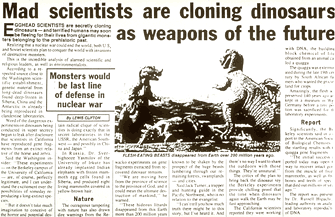
What is “Good Science”?

Disclaimer: This is a gross generalization of what science is about; science is actually much more complex than how it is described here, but this will give you a basic background if you need it.
1) Science is a human endeavor. Scientists are all human, with the typical faults and foibles that non-scientists have. Sociology, politics, psychology, and similar aspects of human nature all have a profound influence on how science is conducted.
2) Science follows certain rules and guidelines. Exactly what these rules and guidelines are depends on what area of science a specific scientific procedure falls within. The scientific method (i.e. hypotheses are formulated from observations, and theories develop from these hypotheses), sometimes cited as the one and only way that science is conducted, is not the paradigm that scientific inquiry must always follow, but it often is the best objective procedure. Science is not so monolithic and mechanical; it defies simple explanations, just like many other human endeavors.
3) Facts versus opinions. An important distinction to make clear when science is an issue is the difference between fact and opinion. "Fact" in a scientific context is a generally accepted reality (but still open to scientific inquiry, as opposed to an absolute truth, which is not, and hence not a part of science). Hypotheses and theories are generally based on objective inferences, unlike opinions, which are generally based on subjective influences. For example, "I am a humorous person" is certainly an opinion, whereas "if I drop this glass, it will break" could best be called a hypothesis, while "the Earth orbits the Sun," or "evolution occurs over time," or "gravity exists" are all today considered to be both facts and theories (and could possibly turn out to be wrong).
Opinions are neither fact nor theory; they are not officially the domain of science (but don't go thinking that scientists don't have opinions — they are only human, and opinions often help to guide their research). Thus, science cannot directly address such issues as whether God exists or whether people are good or bad.
4) Science generally uses the formulation of falsifiable hypotheses developed via systematic empiricism. Hypotheses that cannot ever be disproven are not real science. Hypotheses are generally formed by observing whatever it is you are studying, with the objective of understanding the nature of the subject (this is systematic empiricism). Many scientists hold the belief that a hypothesis cannot ever be proven, only disproven. This especially holds in historical sciences like paleontology, where a time machine would be the only true way to prove a hypothesis.
5) Acceptance of scientific ideas is based on a process of publication and peer review. To become a legitimate theory (but still not established fact), a hypothesis must be subjected to the approval of a scientist's peers and published in an accredited scientific journal. This process keeps the charlatans out of science (well, it is supposed to, at least, ha ha). Most significantly, this helps to maintain science as a process rather than a gradual accumulation of facts, ever creeping forward towards omniscience. Theories tend to persist until a better theory is proposed and gains broad acceptance, rather than new theories being proposed for every tiny fact that is deduced. This fact and the influence of human nature on science are running themes throughout this section of the UCMP on-line museum.
6) Replication is also vital to good science — for the scientific community to accept a finding, other investigators must be able to duplicate the original investigator's findings. Thus, you cannot make up your data; other scientists must be able to follow the same methods you used (whether experimentation, mathematical calculations, formulating major concepts, measuring data, or whatever) and come up with the same results.
Even among paleontologists studying dinosaurs, these principles are sometimes violated. A prime example, pervasive throughout evolutionary thought, is the adaptive story. Adaptive stories take a mysterious feature whose origin is not well understood, and propose an unfalsifiable hypothesis to explain it. For example: We do not yet understand why feathers were evolved somewhere along the non-avian theropod to bird transition. An adaptive story to explain it would be that the feathers were evolved to catch insects with, and then were "co-opted" for flight. Sounds convincing (as many such stories do), but still just a story. The sad truth is that many such problems are essentially unsolvable; we will never know exactly how or why feathers evolved. "Why" questions are some of the most difficult questions to answer when referring to evolution; evolution does not ask why. That is the frustrating reality that makes paleontology hard work.
Another brief example of non-science is the unpublished hypothesis. Wild, controversial hypotheses (often in the form of television "sound bites") are hungrily accepted by the public (who cannot be blamed for not knowing better). For ideas to become accepted in the scientific community, ideas must be published (undergoing the process of peer review) to separate the good science from the bad science. Even still, some not-so-good science still leaks into publications, so scientists must think critically when reviewing other's work.
Drawings of reconstructed dinosaurs and other depictions of them in the media are not pure science, but a blending of inference from scientific data with a dose of imagination and speculation. We don't know if some non-avian dinosaurs had feathers, but some artists do choose to illustrate them so. Science cannot say whether they did have feathers or not unless it has evidence.
Back to DinoBuzz
Learn more about the Dinosauria